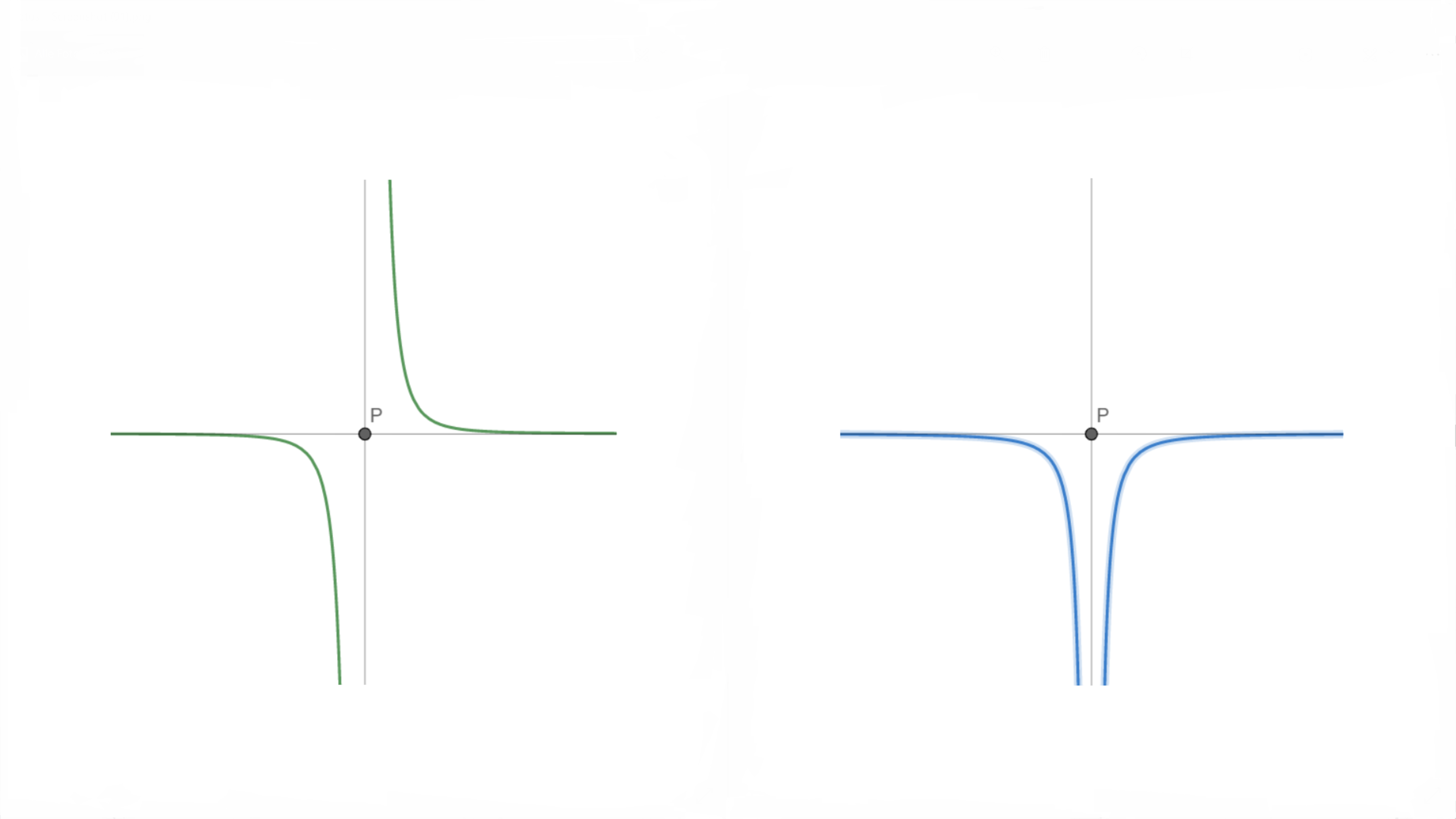Last week I discovered a very neat property of improper Integrals. There are some functions where it is possible to calculate the area under the curve with the Fundamental Therorem of Analysis even if the function is discontinuous .
Let's say you have a function f(x) and you want to calculate ∫abf(x)dx. But unfortunately there is a pole point at xp with b>xp>a.Now I will prove that: If xp is the only point on [a;b] where f is discontinuos and there exists a point P(xp;yp) to which f is point symmetric, then it is possible to calculate the integral with the Fundamental Therorem of Analysis.
Because it is an improper integral, you devide the ingral into two:
∫abf(x)dx=z→0+lim(∫axp−zf(x)dx+∫xp+zbf(x)dx)
Because xp is the only point of discontinuity of f, f is continous on [a;xp−z] and on [xp+z;b] and therefore you can calculate this with the Fundamental Therorem of Analysis, if F is the antiderivative of f:
∫abf(x)dx∫abf(x)dx=z→0+lim(F(xp−z)−F(a)+F(b)−F(xp+z))=F(b)−F(a)+z→0+lim(F(xp−z)−F(xp+z))
If xp is a pole point of f then it is a pole point of F as well. f is point symmetric to P(xp;yp) and because f is a measure of the slope of F (because dxdF(x)=f(x)), F must be axially symmetrical to x=xp.
 an example point symmetric function f in green and a possible axial symmetrical antiderivative of f in blue
an example point symmetric function f in green and a possible axial symmetrical antiderivative of f in blue
And Therefore:
F(xp−z)=F(xp+z)F(xp−z)−F(xp+z)=0
∫abf(x)dx=F(b)−F(a)
The geometric interpretation of this relationship is, that the infinite areas on the left and right side of the pole cancel out each other because of the opposite sign.
It is important to mention, that the antiderivative must be defined for every x=xp in [a;b], because otherwise it will not work.
#Calculus
 an example point symmetric function in green and a possible axial symmetrical antiderivative of in blue
an example point symmetric function in green and a possible axial symmetrical antiderivative of in blue
Easy Math Editor
This discussion board is a place to discuss our Daily Challenges and the math and science related to those challenges. Explanations are more than just a solution — they should explain the steps and thinking strategies that you used to obtain the solution. Comments should further the discussion of math and science.
When posting on Brilliant:
*italics*or_italics_**bold**or__bold__paragraph 1
paragraph 2
[example link](https://brilliant.org)> This is a quote# I indented these lines # 4 spaces, and now they show # up as a code block. print "hello world"\(...\)or\[...\]to ensure proper formatting.2 \times 32^{34}a_{i-1}\frac{2}{3}\sqrt{2}\sum_{i=1}^3\sin \theta\boxed{123}Comments
Edit:
In this proof, I used the argument, that the antiderivative of f must be axial symmetrical to x=xp. But this is not true for all functions.
For example if f(x)=x3+1 then the antiderivative is F(x)=41x4+x. f is point symmtric to P(0;1) but F is not axial symmetrical to x=0. But as we go closer and closer to the pole point, then we approach a "axial symmetry". Therefore near the pole point F is axially symmetrical and hence the important limit in the proof above still converges to 0.
But unfortunately I cannot find a general argumentation, which guarantees that there are no counterexamples.